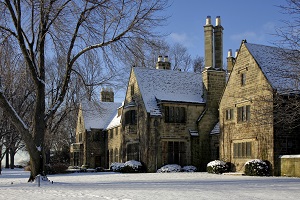Thousands of Resources, Ready to help.
Advantages
Popular

Edsel and Eleanor Ford House (Gaukler Pointe)
SIGNIFICANCE

Gaukler Pointe, the country estate of Edsel and Eleanor Ford, is nationally significant as an outstanding and well-preserved example of the Country Place Era in American Landscape Design. The revolutionary technological innovations in the United States during the early twentieth century—a development in which members of the Ford family were key players—created new wealth which in turn was expressed in the establishment of large unprecedented country estates complete with baronial residences and constructed landscapes. Gaukler Pointe’s particular significance is derived as an example of the mature work of landscape architect Jens Jensen, a leading proponent of the Prairie Style of landscape design.
This country estate was Jensen’s largest private commission and represents a fruitful collaboration between landscape architect, client, and architect Albert Kahn. The landscape also includes minor changes by Jensen’s son-in-law and associate Marshall Johnson, made in the late 1930s following Jensen’s retirement in 1934. Furthermore, the contributions of renowned industrial designer and Ford collaborator Walter Dorwin Teague in the 1930s are also integral to the overall design, and illustrate the maturation of the Fords’ interest in modern design. The nomination is for the estate owned and operated as a museum by the Edsel & Eleanor Ford House, which retains the pivotal resources and landscape components essential to Jensen’s Prairie Style design and the buildings designed by Kahn for the family’s use. The period of significance begins in 1926 when the Fords broke ground on the landscape and extends to 1940, to encompass construction of Marshall Johnson’s design for the New Garden.
Gaukler Pointe is now open to the public for tours and events.
DESIGNATIONS
ARCHITECT, BUILDER, OR DESIGNER(S)
SIGNIFICANT DATE(S)
LINKS AND FURTHER READING